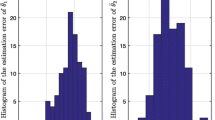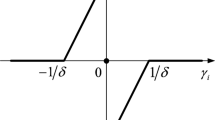Abstract
In this paper, the subspace fitting models for direction-of-arrival (DOA) estimation is analyzed, an effective algorithmic approach is given. As the initialization value is so critical to the global convergence, the continuation theory is also used to develop a new framework which solves the initialization problem powerfully. Some numerical evidence will be given to show that the performance of the new algorithm is very promising.
Similar content being viewed by others
References
I. Ziskind, M. Wax, Maximum likelihood localization of multiple sources by alternating projection, IEEE Trans. on ASSP, ASSP-36(1988)10, 1553–1560.
J. A. Cadzow, Multiple source location-the signal subspace approach, IEEE Trans. on ASSP, ASSP-38(1990)7, 1110–1125.
M. Viberg, B. Ottersten, Sensor array processing based on subspace fitting, IEEE Trans. on AP, AP-39(1991)5, 1110–1121.
Author information
Authors and Affiliations
Additional information
Partially Supported by Shaanxi Provincial Natural Science Fund
About this article
Cite this article
Li, Y., Xu, C. & Ren, C. Direction-of-arrival estimation by continuation method. J. of Electron.(China) 16, 159–164 (1999). https://doi.org/10.1007/s11767-999-1037-8
Issue Date:
DOI: https://doi.org/10.1007/s11767-999-1037-8




